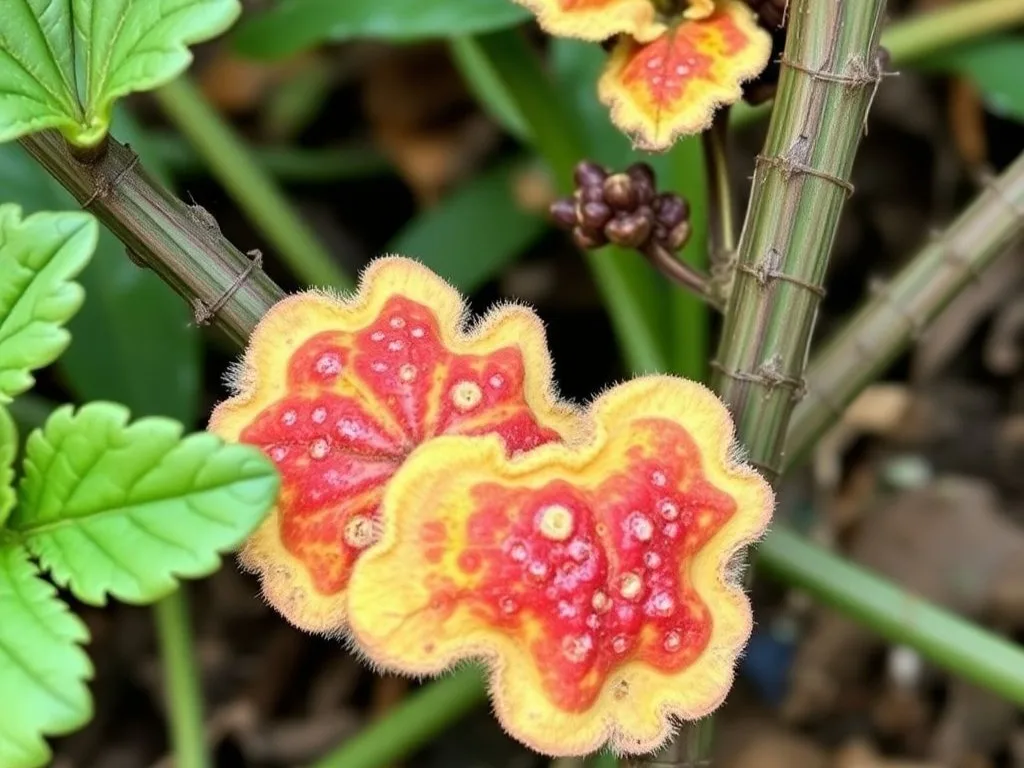Table of Contents Show
Introduction
Understanding Fungal Diseases: A Global Challenge
Fungal diseases pose a serious threat to agriculture and public health, affecting crops, livestock, and human populations around the world. These diseases, caused by various fungal pathogens, can result in significant economic losses in farming and contribute to health issues in both humans and animals. To effectively manage fungal diseases, it is crucial to understand their widespread impact.
Impact on Agriculture
In agriculture, fungal diseases like powdery mildew, root rot, and blight can wreak havoc on crops, leading to lower yields and poorer quality produce. This directly affects food security and farmers’ livelihoods. Furthermore, when livestock are affected by fungal diseases, it can compromise their health, result in decreased production, and threaten the financial stability of farms. The consequences of these diseases extend beyond individual farms as they can disrupt supply chains and contribute to food shortages.
Implications for Public Health
Fungal infections also have serious implications for public health. Pathogenic fungi can cause a range of illnesses, from mild skin infections to severe systemic diseases, especially in individuals with weakened immune systems. Hospitals must remain vigilant for outbreaks of fungal diseases since they can complicate patient recovery and drive up healthcare costs. The increasing resistance of fungi to antifungal medications adds another layer of complexity to treatment options, making prevention and management of these infections crucial.
The Need for Effective Management
The significance of fungal diseases cannot be emphasized enough. Their effects ripple through both agricultural and health sectors, highlighting the need for informed management practices. It is essential to develop effective strategies that address the specific challenges posed by these diseases.
In this blog post, we will explore common mistakes made when managing fungal diseases. By understanding these pitfalls, we aim to enhance knowledge and improve approaches for controlling and reducing fungal outbreaks.
Understanding Fungal Life Cycles
Fungal pathogens have intricate life cycles consisting of various stages such as growth, reproduction, and spread. To effectively combat fungal diseases, it is essential to comprehend these life cycles and devise suitable management strategies. Typically, the life cycle can be divided into several important phases:
- Spore formation
- Germination
- Mycelial growth
- Fruiting body development
- Spore dispersal
Spore Formation
The first stage of the life cycle is spore formation, where the fungus generates spores for reproduction and survival purposes. These spores possess the ability to withstand different environmental conditions, allowing them to remain inactive until favorable circumstances arise for germination. Key environmental factors influencing this phase include moisture levels, temperature variations, and nutrient availability.
Germination
Once the right conditions are met, germination occurs as the dormant spores begin to grow. During this process, the spores transform into hyphae—the thread-like structures that constitute the main body of the fungus called mycelium.
Mycelial Growth
Mycelial growth plays a crucial role in nutrient absorption and establishing an extensive network capable of invading host tissues. It is imperative for effective management strategies to consider the timing of various treatments since intervening during this stage can significantly diminish disease establishment and progression.
Fruiting Body Development
Following mycelial growth comes fruiting body development—the formation of specialized structures that generate new spores. By understanding what triggers fruiting body formation, we can identify optimal periods for applying fungicides or implementing other control measures.
Spore Dispersal
The final phase involves spore dispersal—an event where the fungus spreads its spores to new locations, thereby heightening the risk of infection.
A comprehensive understanding of these fungal life cycle stages is vital for successful management of fungal diseases. By recognizing when interventions should occur at specific stages, we can greatly improve treatment effectiveness and prevention strategies.
Over-Reliance on Chemical Treatments
The management of fungal diseases often sees a predominant reliance on chemical fungicides as the primary solution. While these products can be effective in the short term, over-reliance on chemical treatments can pose significant risks.
Development of Resistance
One of the primary concerns is the development of resistance among fungal populations. When fungicides are used excessively, selective pressure may lead to the evolution of resistant strains, rendering these chemical solutions less effective over time. This resistance can complicate disease management, necessitating the use of increasingly potent chemicals or alternative treatment strategies.
Impact on Beneficial Organisms
Furthermore, the use of chemical fungicides can adversely affect beneficial organisms within the ecosystem. Soil health, which is critical for plant growth, is influenced by the microbial community present. Chemical treatments can disrupt these valuable microorganisms, leading to imbalances that may reduce soil fertility and plant resilience. The loss of beneficial fungi and bacteria can also make plants more susceptible to disease, creating a cycle that encourages further reliance on chemical solutions.
Environmental Implications
The environmental implications of excessive chemical use cannot be overlooked. Runoff from agricultural fields can contaminate local water bodies, adversely affecting aquatic life and potentially entering the human water supply. Additionally, the impact on non-target organisms, including pollinators and other wildlife, can lead to biodiversity loss.
In managing fungal diseases, it is crucial to balance the use of chemical fungicides with integrated pest management practices that include biological controls, cultural approaches, and resistant plant varieties. By fostering a more holistic understanding of fungal disease management, practitioners can mitigate the risks associated with an over-reliance on chemical treatments and promote sustainable practices that protect both crops and ecosystems.
Neglecting Cultural Practices
Effective management of fungal diseases in agriculture relies heavily on following good cultural practices. Unfortunately, many growers ignore these basic strategies, unintentionally allowing fungal infections to flourish.
Improper Crop Rotation
One common error is not rotating crops properly. Fungal pathogens often live in the soil and can infect successive crops if similar species are planted every year. By implementing a diverse crop rotation plan, you can disrupt the life cycles of these pathogens, leading to a decrease in their populations and reducing disease incidence.
Inadequate Sanitation Measures
Another factor contributing to the persistence of fungal diseases is insufficient sanitation measures. If you fail to remove diseased plant material, weeds, and debris from the growing area, fungal spores will survive and spread, increasing the chances of infection during the next growing season. Regular cleaning and practicing good field hygiene are crucial steps in limiting the potential for outbreaks of fungal diseases.
Poor Irrigation Management
Irrigation management also plays a significant role in worsening the prevalence of fungal infections. Overhead watering can create a humid environment that promotes the growth of fungal pathogens. On the other hand, under-irrigation can stress plants, making them more vulnerable to disease. It is essential to adopt irrigation methods that maintain optimal moisture levels in the soil while avoiding excessive leaf wetness to prevent fungal proliferation. Techniques such as drip irrigation may be beneficial since they deliver water directly to the root zone without saturating the foliage.
Neglecting important cultural practices like proper crop rotation, sanitation, and effective irrigation management can make crops more susceptible to fungal diseases. It is crucial to identify and address these common mistakes in order to grow healthier crops and improve agricultural productivity.Copy
Ignoring Environmental Factors
Effective management of fungal diseases requires a comprehensive understanding of environmental factors that significantly influence the proliferation of pathogenic fungi. Humidity levels, temperature fluctuations, and soil health are critical elements that gardeners and farmers must consider when developing a strategy for fungal disease control. Fungal pathogens thrive under specific conditions, and overlooking these environmental aspects can lead to ineffective treatments and the escalation of infestations.
The Importance of Humidity Monitoring
One common mistake made when managing fungal diseases is the failure to monitor humidity levels. High humidity creates a conducive environment for fungal growth, allowing spores to germinate and spread rapidly. This is particularly prevalent in enclosed spaces such as greenhouses, where ventilation may be limited. Regularly assessing humidity and implementing adequate air circulation can drastically reduce the prevalence of fungal diseases.
Understanding Temperature Dynamics
Temperature is another crucial factor that can influence fungal disease dynamics. Certain fungi prefer warmer temperatures, while others thrive in cooler conditions. Ignoring the prevailing temperature can result in the wrong timing of treatments. For instance, applying fungicides at the wrong temperature may diminish their effectiveness, allowing diseases to establish themselves. Maintaining an optimal temperature range and adjusting treatment schedules accordingly is essential for effective control.
Recognizing Soil Health’s Role
The health of the soil is perhaps one of the most underestimated environmental factors in fungal disease management. Soil health directly affects plant resilience against fungal pathogens. Poorly managed soil, depleted of nutrients or lacking in beneficial microorganisms, can weaken plants, making them more susceptible to infections. Routine soil analysis and appropriate amendments can enhance soil health, thereby providing plants with better resistance against various fungal diseases.
Paying attention to environmental factors such as humidity, temperature, and soil health is vital for successful management of fungal diseases. By regularly monitoring these conditions and making necessary adjustments, individuals can minimize the risk of outbreaks and promote healthier ecosystems.
Understanding the Importance of Accurate Fungal Identification
Identifying the specific fungal species responsible for a disease is crucial for effective management and treatment. Fungal diseases are caused by a wide variety of pathogens, each with its own characteristics and management needs. When misidentification happens, it can lead to wrong treatment choices, which may make the problem worse instead of better. This emphasizes the importance of accurate diagnosis as the first step in a successful pathology management plan.
Challenges in Field Diagnosis
Different fungal pathogens can show similar symptoms, making it difficult to diagnose them in the field. For example, plants affected by different fungi might show signs of wilting, discoloration, or even growth abnormalities. Without knowing exactly which fungal species is involved, a generic treatment approach may be used, which often doesn’t work well. Misguided attempts to control a specific fungal disease based on incorrect species identification can waste resources and potentially spread the pathogen further.
Tailoring Management Strategies
Understanding the biology and ecology of the specific fungus is essential for effectively tailoring management strategies. Some fungal species may need certain environmental conditions to thrive, while others may be more resistant to common fungicides. Therefore, getting accurate identification allows practitioners to implement targeted management protocols, which may involve using specific fungicides, cultural practices, or biological controls. Working together with mycologists or using molecular techniques for identification can also improve treatment effectiveness.
Accurate identification of fungal species is a fundamental part of managing fungal diseases. Knowing exactly which pathogens are involved enables tailored management strategies that increase the chances of successful control and reduce the risk of further problems caused by mismanaged fungal infections.
Insufficient Monitoring and Assessment
The management of fungal diseases is often compromised by insufficient monitoring and assessment. Regular scouting and thorough evaluation are essential components of effective disease management strategies. When these steps are neglected, it can lead to inadequate treatment responses and the escalation of fungal outbreaks.
Common Mistakes in Monitoring and Assessment
1. Neglecting a Systematic Scouting Schedule
One common mistake is failing to implement a systematic scouting schedule. Regular inspections of plants and crops are vital for early detection of fungal infections. Without a consistent approach to monitoring, symptoms may go unnoticed, allowing the disease to establish itself further and potentially spread to healthy plants. Timely identification is crucial for applying the most appropriate fungicide treatment and minimizing crop loss.
2. Misinterpreting Symptoms
Moreover, recognizing symptoms of fungal diseases can often prove challenging due to the similarities between various plant disorders. Gardeners and farmers may misinterpret the symptoms of one disease as another, leading to ineffective treatments. It is prudent to educate oneself about the characteristic signs of various fungal infections and employ diagnostic tools when necessary. This not only aids in accurate identification but also promotes more appropriate management decisions.
3. Inadequate Data Recording
In the context of data recording, failures to accurately document observations can severely hinder the ability to track disease progression and treatment effectiveness. Insufficient records make it impossible to analyze trends over time, which can lead to the recurrence of similar problems in future seasons. Proper documentation should include details on weather conditions, symptom development, and the success of any implemented control measures. This comprehensive approach ensures that the management plan can be adapted based on historical data.
By addressing these common mistakes, gardeners and farmers can improve their monitoring and assessment practices for fungal disease management.
Lack of Integrated Management Strategies
Managing fungal diseases in agriculture and horticulture can be complicated, requiring a thorough and integrated approach. One of the main mistakes in managing these diseases is not using Integrated Pest Management (IPM) strategies. IPM combines different control methods—chemical, cultural, and biological—to achieve better and more sustainable results. Ignoring any of these three components can result in poor disease control, increased pest resistance, and potential economic losses.
The Role of Cultural Controls in IPM
Cultural controls are essential for an effective IPM strategy. This involves changing farming practices to create an environment that is less favorable for fungal pathogens. Techniques such as crop rotation, soil sanitation, and proper irrigation management not only decrease the occurrence of diseases but also improve overall plant health. However, many managers overlook these cultural methods and rely too much on chemical interventions, which can ultimately lead to negative effects like resistance development among fungal populations.
Strengthening Management with Biological Control Agents
In addition to cultural controls, using biological control agents—such as beneficial fungi and bacteria—can further enhance the management strategy against fungal diseases. These natural organisms outcompete, parasitize, or inhibit pathogenic fungi, offering a sustainable alternative to chemical fungicides. Unfortunately, the integration of these biological controls into regular practices is still limited, mainly due to a lack of awareness or understanding of their benefits.
The Importance of Synergy in Disease Management
The ineffective coordination between these different methods often results in reduced effectiveness in managing fungal diseases. An isolated approach can not only lead to increased disease severity but also create a cycle of dependence on chemical solutions that could harm the environment. Therefore, it is crucial to adopt an IPM framework that combines chemical, cultural, and biological control measures to promote long-term management of fungal diseases while minimizing negative effects.
Conclusion and Best Practices
Managing fungal diseases effectively is a complex challenge that requires a well-organized approach to achieve the best results. Throughout this discussion, several common mistakes have been highlighted, showing that improper diagnosis, reliance on a single treatment method, and neglecting cultural practices can significantly hinder efforts to control these pathogens. Understanding the complexities involved in fungal disease management is crucial for developing strategies that are both effective and sustainable.
Integrated Disease Management (IDM)
One of the primary best practices is implementing an integrated disease management (IDM) approach. This method encompasses a combination of biological, cultural, and chemical controls, tailored to the specific fungal pathogens affecting the environment. For instance:
- Crop rotation
- Selecting resistant varieties
These practices can play crucial roles in disrupting fungal life cycles and minimizing disease incidence.
Proper Application of Fungicides
Another critical aspect includes the proper application of fungicides. It is vital to follow label instructions meticulously to avoid issues such as resistance development. Rotating fungicide classes can mitigate the risk of resistance while ensuring comprehensive coverage against fungal threats.
Regular Monitoring and Education
Reflecting on current management strategies is equally important for achieving long-term success. Stakeholders should remain open to adopting new information and methodologies, recognizing that ongoing education is vital in the face of evolving fungal resistance patterns and climate variability.
By embracing these recommended practices, individuals and organizations can enhance their ability to manage fungal diseases more effectively, ultimately safeguarding crop health and yield over time.
FAQ:
Common mistakes include over-relying on chemical treatments, neglecting cultural practices like crop rotation and sanitation, ignoring environmental factors, and insufficient monitoring and assessment of crops. These errors can lead to increased disease severity and economic losses.
Crop rotation disrupts the life cycles of fungal pathogens that can survive in the soil. By planting different species each season, you reduce the chances of these pathogens infecting the same type of crops repeatedly, ultimately lowering disease incidence.
Implement a systematic scouting schedule for regular inspections, accurately identify symptoms, and maintain detailed records of observations, weather conditions, and treatment results. This comprehensive approach helps with early detection and more effective management.
Environmental factors such as humidity, temperature, and soil health significantly influence fungal growth. Monitoring these conditions helps you make timely interventions and adapt treatment strategies to effectively control fungal outbreaks.
IPM is a holistic approach that combines chemical, cultural, and biological control methods to manage pests and diseases sustainably. It minimizes reliance on any single method, reduces the risk of resistance, and promotes overall plant health—making it essential for effective fungal disease management.










